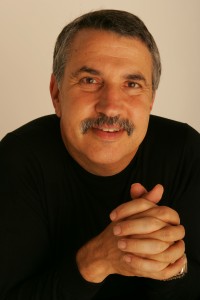By Alison van Diggelen, host of Fresh Dialogues
This week, a report by the Pew Charitable Trust was released, underlining how much the United States is trailing in the clean tech race. Phyllis Cuttino, Pew’s Program Director wrote a succinct piece in the Huffington Post pointing to the fact that the United States fell far behind China in clean energy finance and investment in 2009. China’s total was over $30 billion compared to the U.S. clean energy investment of approximately $17 billion. In light of the BP oil spill and the continuing saga of disaster, both environmental and economic, she reaches a strong conclusion:
“Safe and reliable clean energy can be harnessed to create new jobs, lessen our dependence on foreign energy sources and reduce global warming pollution. That is, if leaders in Washington can look past current partisan differences and work together to create an economic environment for tomorrow, in which our nation’s can-do spirit can again thrive.”
An excellent time to revisit the advice of one of the most vocal advocates for a new energy policy: Author and New York Times columnist, Tom Friedman who spoke with Fresh Dialogues on the subject of energy policy and DC last year.
Download or listen to this lively Fresh Dialogues interview
We welcome feedback at FreshDialogues.com, click on the Contact Tab | Open Player in New Window
Here’s a link to the VIDEO (Tom Friedman on China Envy)
Also see Tom Friedman on Copenhagen Video “This is a problem that will be solved by innovators, not regulators.”
From the archives: I caught up with Pulitzer Prize winner, Tom Friedman, at the Foothill College Celebrity Forum lecture series, where he delivered a spirited argument for why the United States must embrace a green economy. In this second part of our interview, we explore his part in driving the green agenda. Last January, he took part in a congressional hearing on green tech and economic recovery, sponsored by US Senator, Barbara Boxer. We discuss his role in that; and how he deals with critics.
Click here for part one of the interview about his book, Hot Flat, and Crowded.
On Friedman’s role in driving the green agenda
“I use my platform as a journalist to drive this agenda that I see as important… I see a lot of things that are very exciting happening – exploding really – on a kind of small scale, but they haven’t yet reached critical mass and when you’re talking about changing the climate, you are talking about critical mass. It hasn’t yet been translated into policy at scale.”
On his action at the Congressional level in January
“It was an informal hearing, sponsored by Barbara Boxer, on climate and energy. John (Doerr) and I were the two main expert witnesses…No one intervention like that is going to be decisive, it takes many more…most of all from the President.”
On dealing with critics
“I think there’s a big audience for what I say and I don’t really pay attention to the critics. I keep on marching on. I hear it and it’s fine. And it’s a free country. You can say whatever you want. But I’ve got my own bully pulpit and I use it. I don’t use it to shout back at critics; I use it to get my message out. I’m looking forward. You know, the dogs bark and the caravan moves on. I’m in the caravan. My feeling is, I’m out there. And therefore, if you can’t take the heat, don’t be out there… Why would I waste a column writing about one of my critics? So what I always say to the critics is: ‘you may be writing about me, I really appreciate that, but don’t think for a second that I’d waste a column writing about you.’ ”
What drives Tom Friedman?
“I’m having fun. I have the best job in the world. I get to be a tourist with an attitude…go wherever I want, write whatever I want…and they pay me for that. I wouldn’t give it up for the world. I still enjoy getting up every morning, hitching up my trousers and getting out there…opening up my laptop and taking on the world.”
The interview was recorded at the Flint Center in Cupertino on September 10, 2009
For Part One of the interview, click here
For Part One transcript, click here
For Part Two transcript, click here



